- In the event that a PJ gets attached to SF/SEAL/MARSOC team which already has its' own SOCM trained 18d, SACR, and/or corpsman, what becomes that PJ's field of responsibility? [In response to my interest in AF Pararescue, an older SF retiree told me in jest, "you're 6'2 and 220 pounds! You're gonna be a glorified mule if you ever get attached to an SFG cause that 18d is gonna wanna shoot." -- is there truth to this?]
So, this question is because you (and your SF retiree) don't understand a Pararescueman's primary capability. We are not medics. In your scenario of 'attachment' (formally called 'direct support'), the team I am going to would already have a medic. Teams that request PJ's to be their medic get turned down if I am the one handling the request. We are not medics, we are tactical rescue specialists. We are great at trauma medicine, and the good PJ's are great at field medicine as well, but that's just one tool in our toolbox. I will refrain from geeking out further on this topic. We aren't medics, so our responsibility doesn't change in the presence of another medic- that responsibility is Technical Rescue Specialty, a ground combat professional steeped in air warfare expertise and an air/ground liaison. That's our lane.
In ref: "
glorified mule because the 18D wants to shoot..." I say this not as posturing, but as an example of an actual scenario I was personally in- if the D wants to throw me his med bag, and get in the stack- fine. But he has to out shoot me in front of his team, and if I win- then he gets the med bag AND my extrication gear, and I go on the stack. As far as you being a glorified mule- I urge you to come to my Troop. I could use you, and I refuse to let you carry other team's gear. That's not our job. And any ODA (not SFG) that would try to use you as such would find their further request for PJ's denied. For the record, I don't have experience with this in the 'real world', except working with EURSOF. I usually just say something like, "Hey, if you are too weak to carry your assigned gear, and you need the American to put it in his ruck cause I am stronger than you- no problem! Gimme your heavy stuff, little guy." That usually solves the issue right there.
In real life application and in light of current events/conflicts, which SOF component would have the most opportunity to perform rescue type operations (not counting casevac/medevac)?
Every service is tasked with the rescue and recovery of their own assests/personnel. Pararescue is the only force specifically trained/equipped in the DoD for PR. CASEVAC/MEDEVAC is not PR. It's CASEVAC/MEDEVAC. Also, CASEVAC/MEDEVAC are not the same thing nor are they interchangeable. Another topic that would take too many electrons to get into here. The short answer? Whoever is closest. Barring a 'close' unit, then the people with the best possible asset effects recovery. Who that is depends on the AO, available assets, mission set, tasking authority, etc.
